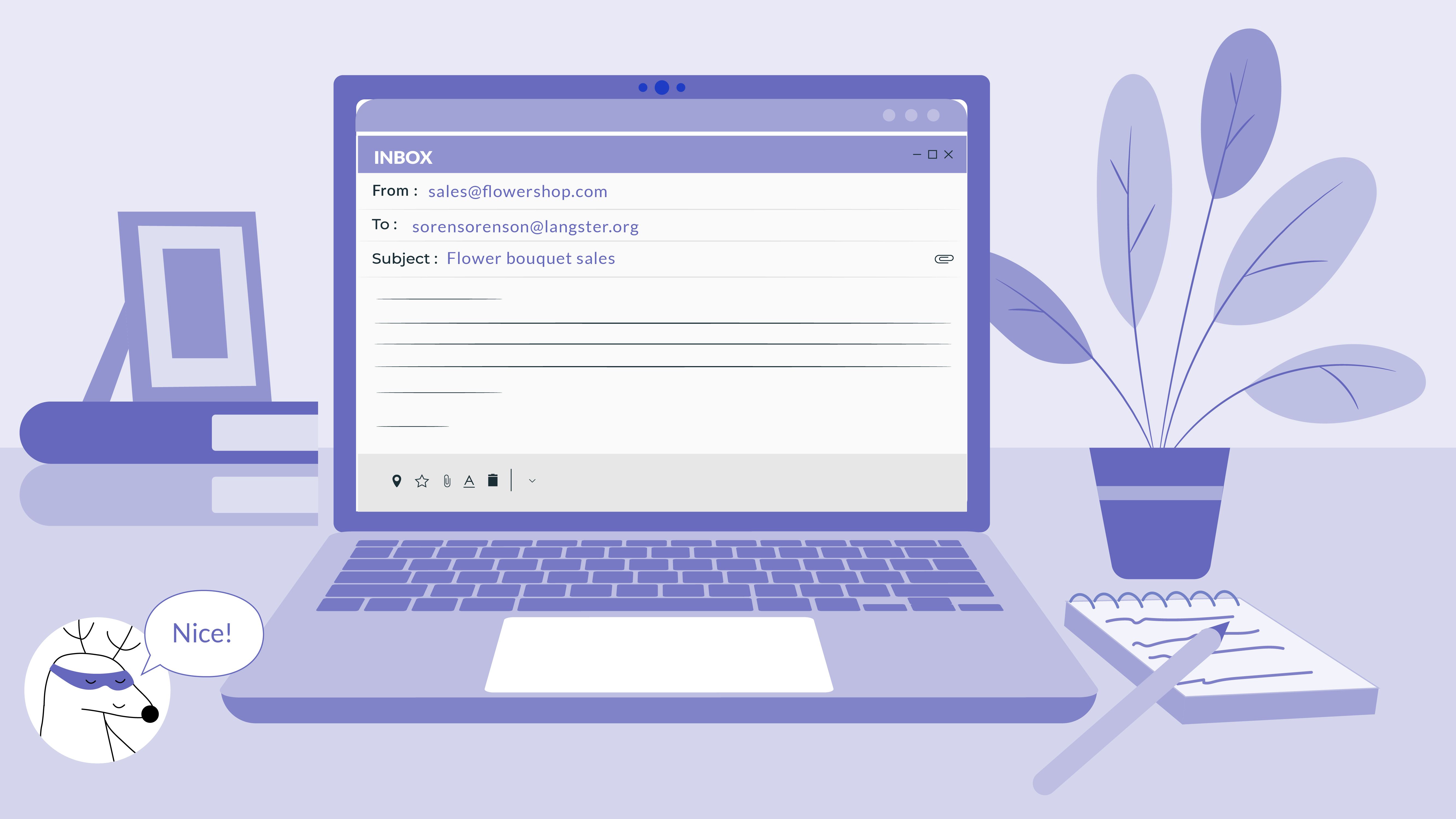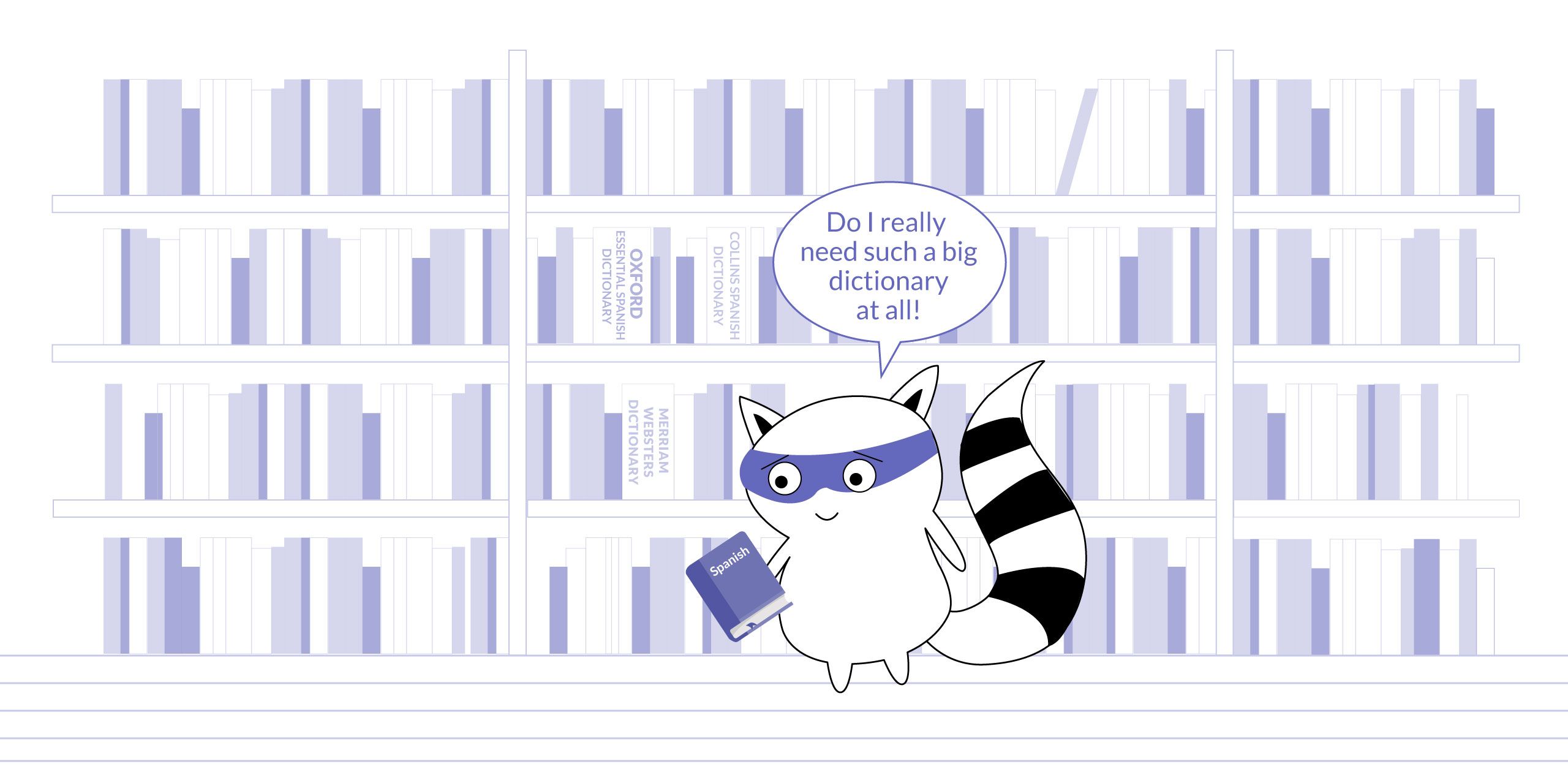
E-mail has become an indispensable part of our daily communications. Whether it's for personal connections, business negotiations, or commercial outreach, the ability to craft a well-structured and culturally appropriate email is crucial. When involving another language, such as Spanish, you also need to be sensitive to linguistic nuances and cultural norms.
This blog post provides essential guidance for all Spanish learners eager to communicate effectively via email. From the structural elements of Spanish emails to the subtleties of politeness and concrete examples, consider it your go-to resource for email writing in Spanish.
Learn Spanish with Langster
Elements in an Email
To send a proficient email in Spanish, you’ll need to grasp and integrate the fundamental components of effective communication — including your domain.
First of all, understanding user account credentials ensures seamless access to your email platform. Second, adhering to a structured mail format — complete with a clear subject line, salutation, body, and conclusion — promotes clarity and professionalism.
Furthermore, upholding internet etiquette, such as avoiding all-caps and ambiguous language, is crucial for maintaining decorum in digital interactions. Before sending, meticulously review for errors and ensure proper attachment inclusion.
Additionally, being mindful of sender and recipient domains adds credibility and security to your correspondence, fostering trust and facilitating productive communication within the digital realm.
Dirección de Correo Electrónico (E-mail Address)
Spanish
English
Dirección de correo electrónico.
Email address.
The starting point of any email is your personal or professional e-mail address (dirección de email or dirección electrónica). It’s your digital identifier and should ideally reflect professionalism, especially in a business context.
Remember your una contraseña to easily access your account!
Spanish
English
Contraseña.
Password.
Destinatario (Recipient)
Spanish
English
Destinatario.
Recipient.
This refers to the email address of the person or group you are writing to. Ensuring the correct spelling is vital to avoid miscommunications or your email getting lost in the digital void.
Asunto (Subject)
Spanish
English
Asunto.
Subject.
The subject line is critical, as it offers the first impression of your email. It should be concise, clear, and informative, giving the recipient a precise idea of the email's content and importance.
Saludo (Greeting)
Spanish
English
Saludo.
Greeting.
The greeting sets the tone for your message. In Spanish, the level of formality in your greeting should be aligned with your relationship with the recipient, ranging from informal Hola to formal Estimado/a.
Cuerpo del Email (Body)
Spanish
English
Cuerpo del email.
Body.
This is where you articulate your message, giving attention to clarity, conciseness, and correctness. The body should be structured to make your email easy to read, with paragraphs or bullet points and polite language.
Despedida (Closing)
Spanish
English
Despedida.
Closing.
The sign-off is your chance to leave a final impression. Choose a closing that matches the tone of your email, such as Cordialmente for formal emails or Un saludo for more casual correspondence.
Firma (Signature)
Spanish
English
Firma.
Signature.
Your email signature provides the recipient with your contact information and professional designation, if applicable. It’s a vital element for professional emails, ensuring the recipient knows how to respond or who they’re dealing with.

Politeness
The level of formality in your Spanish email should align with your relationship to the recipient and the cultural context. In general, Spanish speakers tend to be more formal than English speakers in their correspondence.
Here's how to maintain appropriate politeness:
- Use the usted form unless you know the recipient well or have established an informal communication tone.
- Opt for formal expressions and conventional phrases, especially in business settings.
- Be aware of regional variations in greetings and sign-offs; Spanish from Spain varies from Latin American Spanish.
Examples of Emails in Spanish

To help you better understand how to structure emails in Spanish, here are a few examples for different contexts:
Business Email
Estimado Sr. Gómez,
Me pongo en contacto con usted para informarle sobre nuestra próxima reunión programada para el lunes 21 de octubre. Adjunto encontrará la agenda y los documentos necesarios para su revisión.
Quedo a la espera de su confirmación de asistencia.
Cordialmente,
[Nombre]
Translation:
Dear Mr. Gómez,
I am contacting you to inform you about our next meeting scheduled for Monday, October 21. Attached you will find the agenda and the documents necessary for your review.
I look forward to your confirmation of attendance.
Cordially,
[Name]
Personal Email
Hola María,
¡Qué alegría tener noticias tuyas! Estoy entusiasmado/a por planificar nuestro encuentro durante las fiestas. ¿Tienes algún plan en mente?
Espero tu respuesta.
Un abrazo,
[Nombre]
Translation:
Hello Maria,
How nice to hear from you! I'm excited to plan our get-together during the holidays. Do you have any plans in mind?
I wait for your answer.
A hug,
[Name]
Sales Email

Hola,
Te presentamos nuestra nueva colección de otoño. Hemos incluido una selección especial con un descuento exclusivo para nuestros clientes fieles. Compra con 50% de descuento.
No dudes en visitar nuestra página web o contactarnos directamente para más información.
[Departamento de Ventas]
Translation:
Hello,
We present our new autumn collection. We have included a special selection with an exclusive discount for our loyal customers. Buy with a 50% discount.
Do not hesitate to visit our website or contact us directly for more information.
[Sales department]
The Bottom Line

As you can see, compiling an email in Spanish demands an understanding of not just the language's structure but also its cultural nuances. Whether it's for personal connections, professional growth, or expanding your business reach, each email is an opportunity to deepen your relationship with Spanish-speaking counterparts.
To further enhance your skills and confidence in Spanish email writing, we recommend exploring Langster. Langster offers a unique, immersive approach to language learning that focuses on real-life scenarios — including email communication.
Learn Spanish with Langster









